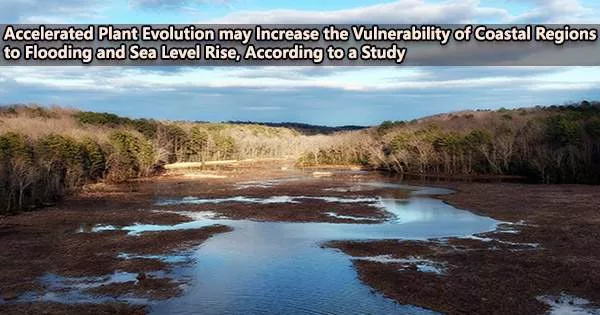The Chesapeake Bay wetlands have evolved more quickly than previously anticipated, which may reduce the likelihood that coastal marshes will be able to withstand future sea level rise, according to research from the University of Notre Dame and partners that was just published in Science.
Jason McLachlan, an associate professor in the Department of Biological Sciences, evaluated the role evolution plays in ecosystems in the Chesapeake Bay by studying a type of grass-like plant, Schoenoplectus americanus, also called chairmaker’s bulrush.
The research team showed that “resurrected” plants were allocating more resources in their underground roots, allowing them to store carbon more quickly than modern plants, using a combination of historical seeds discovered in core sediment samples, contemporary plants, and computational models.
“We think this surprising reduction in below-ground growth might be a response to increased pollution in the Chesapeake Bay,” McLachlan said. “Decades of pollution have resulted in higher levels of nitrogen and phosphorus in the waters, and since these are plant nutrients, evolution might now favor plants that ‘invest’ less in expensive roots.”
Since the middle of the 20th century, the seeds from the extinct plants have lain dormant beneath the ground on the Smithsonian Environmental Research Center’s bayfront property. McLachlan and other researchers, who then allowed them to sprout and develop, gathered these. This kind of study, often referred to as resurrection ecology, offers concrete proof that can back up generalizations about evolutionary change.
The hazard of sea level rise to coastal wetlands has previously been proven using computational models, which have also taken into account scientists’ knowledge of how flooding affects plant growth and how plant growth impacts stability.
Evolutionary change over almost a century played a destabilizing role for coastal ecosystems. Other species in other ecosystems might have responded differently to human environmental impact, perhaps providing more resilience to ecosystems, or perhaps having no impact at all.
Professor Jason McLachlan
Modern plants devoted less energy to roots deeper below ground, even though they grew above ground similar to samples from the mid-1900s. As a result, there was less biomass produced underground, which could lower the ability of wetlands to endure flooding.
McLachlan and collaborators showed, through computational models, that modern plants store carbon in soils 15 percent slower than the plants did in the mid-1900s.
McLachlan was astounded by the speed with which evolutionary change occurred in Schoenoplectus americanus.
“The research shows the role evolution plays as ecosystems are increasingly stressed by the impacts of human society,” he said.
First author Megan Vahsen, a doctoral student at Notre Dame, discovered the importance of below-ground plant traits as early as 2017 as a first-year graduate student at Notre Dame.
Although the researchers are unable to state with certainty that pollution is causing plants to spend more of their energy above ground and less below ground, she feels the combination of methodologies utilized in the current study offers unique predictions about how evolution may affect ecosystems. She expects the study will motivate researchers to study the causes that drive evolutionary change.
“For reasons of inconvenience, science has often ignored what happens below ground,” she said, noting that she and undergraduates at Notre Dame spent about 500 hours washing and sorting plant roots. “But we have learned so much in this study; there are so many secrets happening below ground.”
McLachlan said the research further demonstrates the role evolution plays as ecosystems are increasingly stressed by the impacts of human society.
“Evolutionary change over almost a century played a destabilizing role for coastal ecosystems. Other species in other ecosystems might have responded differently to human environmental impact, perhaps providing more resilience to ecosystems, or perhaps having no impact at all,” he said.
“Now that we’ve shown that evolutionary change can be fast enough and large enough to affect ecosystem resilience, we hope other researchers will consider this component of biological response to global environmental change.”
Other collaborators in this research include Michael Blum and Scott Emrich of the University of Tennessee, Jim Holmquist and Patrick Megonigal of the Smithsonian Environmental Research Center, Brady Stiller of the University of Notre Dame, and Kathe Todd-Brown of the University of Florida, Gainesville. The National Science Foundation and the United States Coastal Research Program funded the study.





